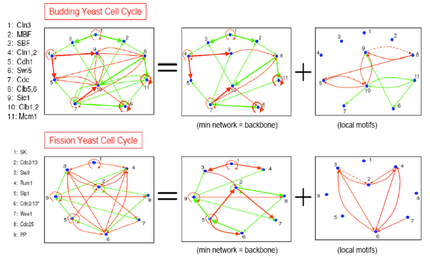
Featured Faculty
Professor Chen Zeng

Dr. Zeng focuses on protein design and bionetwork simulations.
One traditional approach in systems biology is to deduce cellular processes or functions based on experimentally verified biological networks of how individual molecular components such as DNA, RNA, and proteins interact. However, our idea is to probe even more basic complexity-related issues about cellular processes. In an abstract sense, a cellular process is simply a matrix of 0's and 1's indicating which genes or proteins are "on" or "off" at each step of a process. We would like to understand the space of all such processes. Are some processes more difficult to build networks for? Are nature's bioprocesses fundamentally different from other types of processes? Are some processes inherently more complex than others? With these deep questions in mind, we used a somewhat unlikely body of mathematics -- logic -- to study the problem of network.
The logic-based approach is promising because it enables us to simplify some aspects of the problem and capture the space of networks for a given process in a single logical expression that itself facilitates discovery of useful substructures and easy enumeration of all possible relevant networks. The progress of the project indeed shows the power of these thinking. As demonstrated by the study on the cell cycle networks of both budding yeast and fission yeast, the approach allows for the decomposition of a larger network into smaller modules and motifs that provide great insights into the structure-function relationship. Some of these results were recently summarized and published in PNAS (107:10478--10483). The approach further rendered the discovery of phenotypical features of a biological process. That is, in order to satisfy the requirement of feasibility, stability, and evolvability, a biological process will most likely be cascade-like. It is a simple requirement to fulfill nature’s “logic” of molecular interactions. Some of the latest work along this line is being written up and submitted for publication.